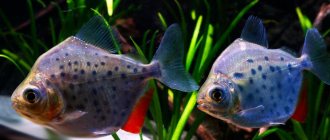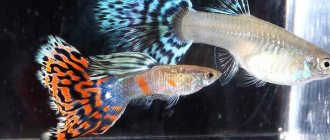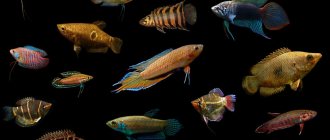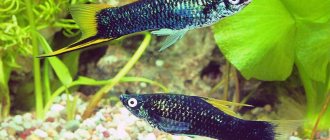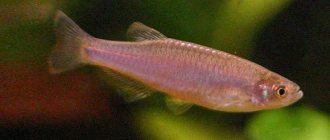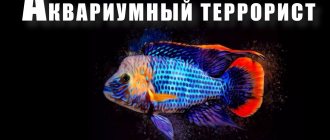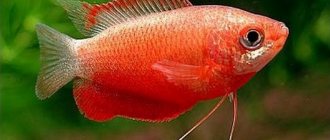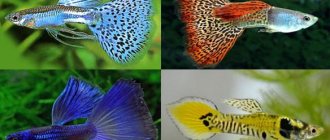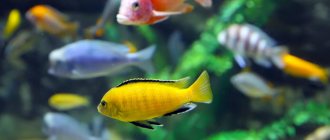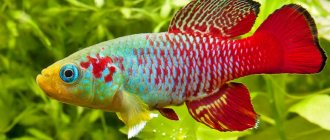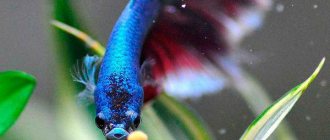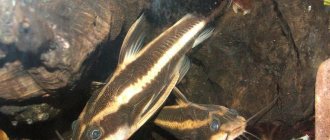Family: Armored catfish (side scale catfish).
Comfortable water parameters for keeping: 25-30°C, dH up to 25°, pH 6-7.5. Aeration and filtration are needed. Weekly change of aquarium water to fresh ~ 1/4 volume.
Aggressiveness: 0% non-aggressive.
Agamix compatibility: with all types of fish, except large cichlids.
Content difficulty: easy.
Life expectancy: up to 10 years.
Names in Latin: Agamyxis albomaculatus, Agamyxis restinifrons, Agamyxis albomaculatus (spinosissimus), Doras flavopictus, Doras pectinifrons
The fish is very secretive. During the day you won't actually see it. The lighting of the aquarium for agamix should be dim, or even completely dim.
The natural habitat is the reservoirs of the river. Amazon: forest lakes, slow-flowing streams, ditches (countries: Brazil, Peru).
In aquarium conditions, agamixis reaches no more than 10-12 cm. In natural conditions, it can reach 17 cm. The body is powerful, elongated, with a large, triangular profile, flattened from top to bottom with a head with 3 pairs of antennae. The dorsal fin is triangular in shape, the first ray is equipped with teeth. The adipose fin is small. The anal fin is well developed. The caudal fin is rounded. Pectoral fin with first long, powerful and jagged ray. The pelvic fins are small and rounded.
The body and fins are brown, covered with rounded yellow spots; on the caudal fin they merge into 2 rows of transverse stripes. Juveniles have shiny white spots. On the antennae, dark and light stripes alternate each other.
To keep agamixes you need an aquarium of 100 liters and 60 centimeters wide. However, these catfish do well in shorter aquariums, but their growth slows down. Large pebbles are recommended as soil. The aquarium should be decorated with plants, grottoes, caves, snags, stones and other shelters.
The fish are peaceful, timid inhabitants of the bottom; they spend their days in shelters, and at dusk they search the bottom in search of food. Very secretive in daylight hours! As neighbors we can recommend: guppies, swordtails, barbs, gouramis, neons, danek, thorns, angelfish... and honestly, anyone. Agamiks are still constantly sitting in the cracks =)
These catfish are also called grunting or singing catfish, as they are capable of making characteristic sounds similar to crackling. Also, when transplanting these catfish, you should not use a net. It gets entangled in it and will be difficult to get out, and you can also get hurt by its sharp fins. When transplanting, it is recommended to use a plastic mug or ladle.
The most important thing in keeping any aquarium pet is the quality of the environment in which it lives. The aquarium should not contain excessive concentrations of nitrogenous compounds: ammonia/ammonium, nitrite and nitrate , as well as phosphates . To do this, it is extremely important to properly set up filtration and aeration . It is important to do timely water changes. Every conscientious aquarist should always have a set of drop tests on hand, at least for nitrate and phosphate. Fortunately, they have now become inexpensive, there are no problems with their assortment and acquisition. For example, we can with a clear conscience recommend you the cool UHE drop tests, , but they are sold only online. In stores in your city - offline, you can find inexpensive Vladox tests .
Besides, you all know what kind of water flows from our taps. Chlorine-containing compounds, heavy metals and other delights of the water utility do not have the best effect on the health of the fish and the aquarium as a whole. Therefore, when changing water, it is advisable to use conditioners that block these harmful substances. For example, the well-known Tetra AquaSafe - we discussed this drug in detail in this article . Here we will say briefly - it blocks chlorine compounds, heavy metals + contains B vitamins, iodine, magnesium, plant extracts. Those. With it, you can safely pour water into the aquarium without fear of harming your beloved pets.
Agamix photo
Agamix diet: In general, they are not picky about food. They are prone to overeating. They prefer to take food from the ground; they eat well sinking tablets and chips, for example, Tetra Cory ShrimpWafers , not to be confused with Tetra Wafer Mix - for loricariids.
Feeding any aquarium fish must be correct: balanced, varied. This fundamental rule is the key to successfully keeping any fish. The article “How and how much to feed aquarium fish” talks about this in detail; it outlines the basic principles of the diet and feeding regime of the fish.
It should be noted that when purchasing any dry food, you should pay attention to the date of its manufacture and shelf life, try not to buy food in bulk, and also store the food in a closed state - this will help to avoid the development of pathogenic flora in it.
Description of appearance
In nature, the agamix star catfish grows up to 17 cm, in an aquarium - no more than 12 cm. The head is large, triangular, with six spotted whiskers, located on a strong body covered with plates for protection. The body ends with a narrow tail. On the back there is a triangular fin with notches on the first ray. The fins on the abdomen are round and small. They are very tough and covered with spines, which straighten out in case of danger.
Varieties
Ancistrus catfish amaze with their species diversity. Representatives of different species differ in body size and color, and many of them adapt well to aquarium keeping.
Regular or blue
The young have bluish scales and white edging on the fins. The color of adult individuals varies from dark gray to yellowish-gray with white, chaotically scattered specks.
Star-shaped
Representatives of this species have short spines on the first rays of the front fins and are distinguished by a very beautiful coloring, associated with the starry night sky. The fish are black or very dark in color with bluish or pearly white spots. The caudal and dorsal fins of the young animals have a bluish edging.
Star
These fish are very similar to star ancistrus, but unlike the latter they have a wide white edging on their fins that does not disappear throughout their life. At the base of their heads there are hidden bone spikes, released in moments of danger.
Veiled
Representatives of this species are dark olive in color with light, randomly located spots. They have well-developed fins that flutter when moving, like a veil in the wind.
Interesting! Thanks to its very smooth movements, reminiscent of flapping wings, the veiled catfish has an alternative name - Ancistrus dragonfly.
Diamond
A rare numbered variety of ancistrus – L-184. Its representatives resemble star catfish in appearance, but are painted in a more saturated black color with large white spots.
Red or Super Red
A new, less common variety bred by German breeders. Its representatives grow no more than 6 cm and have a bright orange or brick-red color. Unlike other ancistrus, Super Red is diurnal and active during daylight hours.
Golden albino
A beautiful golden beige fish with pinkish eyes. Like other albinos, golden ancistrus lives shorter than representatives of other species.
Yellow
Representatives of this species resemble albinos, but have ordinary eyes and a rich yellow color.
Leopard
This artificially bred variety has the official name - LDA-016. Leopard Ancistrus fry are orange-red with dark brown spots. As they mature, their scales take on a golden-yellow hue with bright, contrasting markings.
On a note. Leopard ancistrus, which have gray and brown spots on their bodies, are called brindle or tricolor.
Behavior in the wild
The South American representative of freshwater fauna, Agamix speckled, lives in the upper reaches of the Amazon, in the Venezuelan Orinoco River, as well as in Brazilian and Peruvian lakes. It prefers to settle in clean bottom layers of shallow water with calm, warm water and a densely overgrown shore.
It is active at night. During the daytime it hides between stones and under snags. It feeds on mollusks and snails.
Agamix belongs to the bottom representatives of aquatic fauna, therefore it prefers clean water with an average flow speed
Surprisingly, these fish have the ability to move on their powerful fins on land to bodies of water located close to each other.
If there is not enough oxygen in the water, they rise to its surface. These catfish have both gill and intestinal respiration. This is how they make up for the lack of oxygen.
Agamix spawns during the rainy season; the female is capable of laying from 2 to 3 thousand eggs per spawning.
Diseases and their prevention
The agamix catfish may not get sick at all if the conditions necessary for its maintenance in captivity are organized and fed correctly.
Detecting the disease in agamix is quite difficult due to their nocturnal lifestyle.
The most common disease to which agamixes are susceptible is ichthyophthoriosis, which occurs from damage by ciliated ciliates. With this disease, white dots appear along the entire length of the fish’s body (as if semolina had been scattered). The catfish begin to actively rub against the soil and vegetation in the aquarium.
Agamix are susceptible to ichthyophthoriosis
For treatment, place the fish in a separate aquarium and use antiparasitic drugs prescribed by a specialist. It is necessary to change 10% of the water in the aquarium daily while simultaneously increasing the water temperature by 5-10 degrees.
Individuals just purchased from a store must be kept in quarantine.
Oodiniosis, velvet disease, may not appear immediately. Pisces become less active. The skin peels off and resembles velvet. The disease is treated by adding the antibiotic Bicillin-5 to the aquarium water (1 bottle per 100 l). The next day, change the water by 30% and re-add the drug. After 2 days everything is repeated. The last time Bicillin is added is a week later. This kills the algae in the aquarium, but the fish recovers. Do not stop aeration during treatment.
Oodiniosis in catfish is treated with the antibiotic Bicillin-5
Chylodonellosis is the appearance of cloudy blue areas on the body of catfish, the tail of the fish is tightly compressed. Treat with Levomycetin (3 g per 100 l). It is added 3 times every 48 hours. Before this, change the water by 1/3. You also need to increase its temperature to +28-30 °C and add 3 tbsp. l. table salt.
Levomycetin is used to treat chylodonellosis.
Plants may die during the treatment period.
Another disease of Agamix catfish is dropsy. Symptoms include a swollen abdomen and lack of bowel movements. The sick fish is sent for quarantine to another aquarium, where Levomycetin (75 ml/l) or Ciprofloxacin (50 ml/l) is added to water at a temperature of 27 degrees. Treatment lasts 7 days. In a recovered fish, the belly decreases in size and the fish begins to defecate.
To treat dropsy in catfish, add Levomycetin or Ciprofloxacin to the water.
Content
Conditions of detention are the same as for all singing catfish. Moderate lighting, plenty of shelter, snags or densely packed stones so that the fish can hide during the day.
The soil is better sand or fine gravel. Regular water changes will allow you to keep this fish for years.
Nocturnal and schooling fish, like most of its fellow tribesmen. There are sharp spines on the pectoral fins, be careful that the fish does not hurt you, the injections are very painful.
Based on the same principle, it is not recommended to catch the white-spotted fish with a net; it will become permanently entangled in it.
It is best to use a plastic container. You can also grab it by the dorsal fin, but very carefully.
Catfish agamixis makes sounds characteristic of all singing catfish - grumbling and grinding.
Water parameters: hardness up to 25°, pH 6.0-7.5, temperature 25-30 °C.
Compatibility with other fish
The predatory catfish agamix with its surprisingly calm character is very friendly with gouramis, swordtails, neons, barbs, blue angelfish (photo), guppy fish are also suitable, that is, those types of fish that live in the water column (and not at the bottom) and not disturbing the secretive catfish. Small individuals can become its prey at night.
You cannot add agamix to cichlids, otherwise the singing catfish themselves may be eaten by these aggressive predators.
Compatibility table of agamix with other fish
Breeding
Reproduction of grunt catfish at home is a complex process. Rarely do any professional aquarists take up the task of breeding them.
These fish reach sexual maturity at 1.5-2 years. Adult females appear larger and rounder than males, but are less vibrant in color. Fry cannot be distinguished by these characteristics.
Agamix females are usually more rounded, with a large abdomen
To stimulate the reproduction process, a special gonadotropic drug must be injected into the back muscles of the fish. Then the male and female are placed in an aquarium with a water level of 30 cm with one or two plants located there, for example, Congolese fern in pots (or Bolbitis Gedeloti). No soil is placed on the bottom.
The water temperature in such an aquarium should be maintained within 27 degrees, aeration should be enhanced.
The amount of feed during this period should be increased.
On the wide leaves of plants, the female carries out the process of laying eggs (up to 1000 pieces). After this, the couple is removed from the aquarium (so as not to eat the eggs) and 90% of the total water volume is replaced.
Experts recommend adding methyl blue (light coloring) and salt to the water with future fry at the rate of 2 grams per 1 liter of water. This will protect them from diseases.
To protect fry from diseases, it is recommended to add methyl blue to the water.
After 2-3 days, you can observe the emergence of fry from the eggs . They need to be fed food that is ground into powder: small plankton or live dust.
Reduce the water temperature to 24-25 degrees, increase filtration and aeration. Change 1/10 of the total volume of water in the aquarium daily. Maintain its level at a height of 10 cm.
The fry begin to actively move in the aquarium 5-6 days after their birth.
Reviews
Claims:
- It is impossible to feed enough.
- The amount of food does not matter; it will snack on its aquarium mates.
- He arranges the premises himself. It makes noise at night.
- Doesn't get along well with plants. He even eats shellfish with the shell.
- Jumps out of the aquarium.
What they value:
- Individual character. There are non-aggressive individuals suitable for a community aquarium.
- When kept separately, it becomes attached to the owner. He will find out. Allows you to pet it. Playing. Tries not to hurt. He is wary of strangers.
- Omnivorous. Does not require separate food.
Possible difficulties
When keeping white-spotted agamix, some difficulties may arise, the following recommendations will help you cope with them:
- To ensure that your fish does not suffer from obesity, it is necessary to strictly follow the correct diet.
- Oxygen starvation of catfish occurs most often if the water temperature in the aquarium is higher than the required norm. You should cool the water by adding a little cold water and increase aeration. Too many fish in one aquarium can also cause a lack of oxygen.
- Poisoning in agamix can occur due to excess nitrites and ammonia in aquarium water. It is necessary to regularly test the water using drop tests. They can be purchased at a pet store. You can eliminate poisoning by replacing up to 40% of the water in the aquarium. To do this, add special conditioners that neutralize substances harmful to fish.
- Unnatural white spots on the fish's body may appear due to stress. In a stressful situation, agamixes become dull and partially lose pigmentation. This can happen when transplanting a catfish from a familiar container to another aquarium, as well as after transportation. As you get used to it, the spots will disappear.
Due to the lack of movement, the choice of menu for catfish should be approached responsibly.
A real, albeit small, singing catfish, star agamix, with unusual habits and peaceful behavior will delight the aquarist owner.
Did you find the agamix catfish interesting to keep in your home aquarium? Or maybe you already have it? Share your opinions and experiences in the comments.
Feeding
Agamix is a predatory fish that tends to overeat, which is why food should be varied (up to ¼ plant component, and also contain a lot of protein), balanced and in moderate quantities.
Feeding is done in the evening.
Used fresh or frozen as live food:
- snails;
- oysters;
- shrimps;
- earthworms;
- tubifex;
- mosquito larvae, etc.
Dry food is also suitable for White-spotted catfish, including special tablets for demersal fish. When feeding, you need to ensure that a sufficient amount of food reaches the bottom, bypassing competitors in the upper layers of the aquatic environment, and strictly select only those types of food that will remain on the substrate without floating.
